A nine-year-old king, a buried treasure, and a shocking discovery–do you want to know more? Learn all about Egypt’s most famous pharaoh, King Tut.
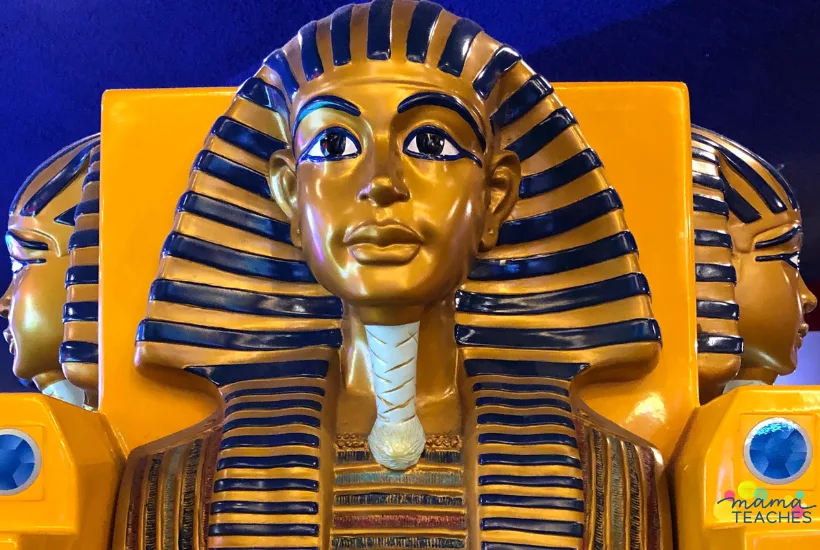
Who Was King Tut?
King Tutankhamun (nicknamed King Tut by the modern world) was pharaoh of Egypt from 1332 to 1323 B.C.
(Remember that we count the years backward until we get to the birth of Jesus). King Tut lived over 3,000 years ago.
He was not pharaoh of Egypt for very long, and he did not accomplish much as Egypt’s leader.
So why is he so famous?
King Tut is well-known for his tomb, mummy, and treasure.
All About King Tut’s Life
King Tut was the son of an unpopular pharaoh named Akhenaten.
Akhenaten upended Egypt’s religious system by forcing his people to stop worshiping the many gods of ancient Egypt.
He wanted them to worship only one god, the god Aten.
After his father’s death (and the short reign of a couple of pharaohs), King Tut became the pharaoh of Egypt.
He was only nine years old.
King Tut’s most notable act as pharaoh was to undo all of his father’s changes to religion.
Under King Tut, people once again worshiped the many gods of Egypt.
When King Tut died, they preserved his body through mummification and buried him in a tomb with many treasures.
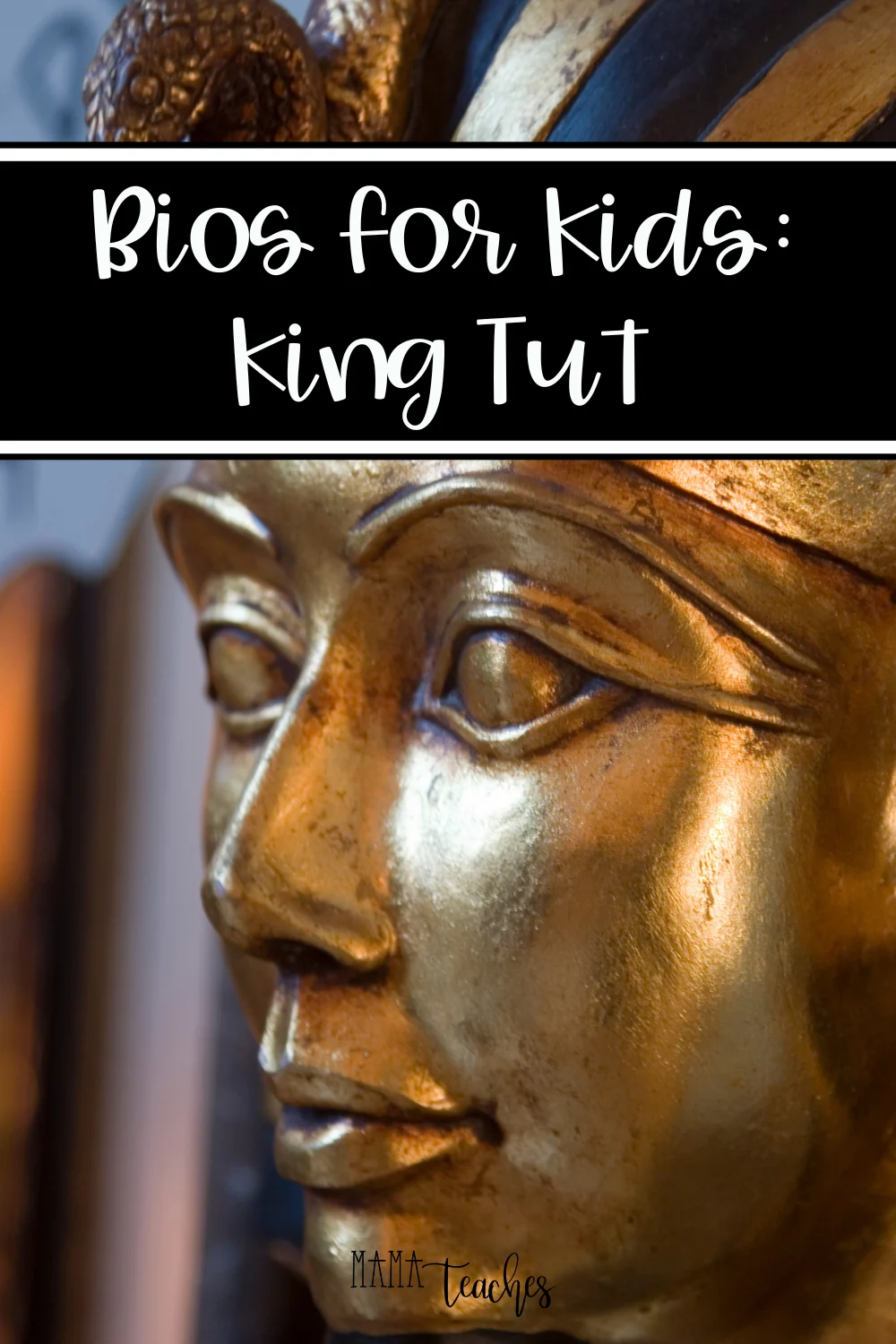
This article contains affiliate links to things that you might like.
How Did King Tut Die?
King Tut died at the young age of 19. He had a wife but no living children.
Why did King Tut die so young?
No one knows for sure.
King Tut’s mummy shows that Tut was born with a deformed foot. He likely could not walk well.
This could explain why all the drawings and carvings of King Tut show him as seated. (Usually, pharaohs are depicted standing.)
His mummy’s skull is missing a chunk from the back, so people have long thought King Tut was murdered by being struck in the head.
But it may be that his skull broke apart during mummification.
King Tut also had a damaged kneecap, likely caused by a fall.
Archaeologists found chariots in his tomb (a pharaoh was often buried with his favorite things). It’s possible that King Tut died from a chariot accident.
King Tut’s mummy also had a disease called malaria, which sometimes can cause death.
Was King Tut sick? Did he fall? Or was he murdered? No one knows for sure how he died.
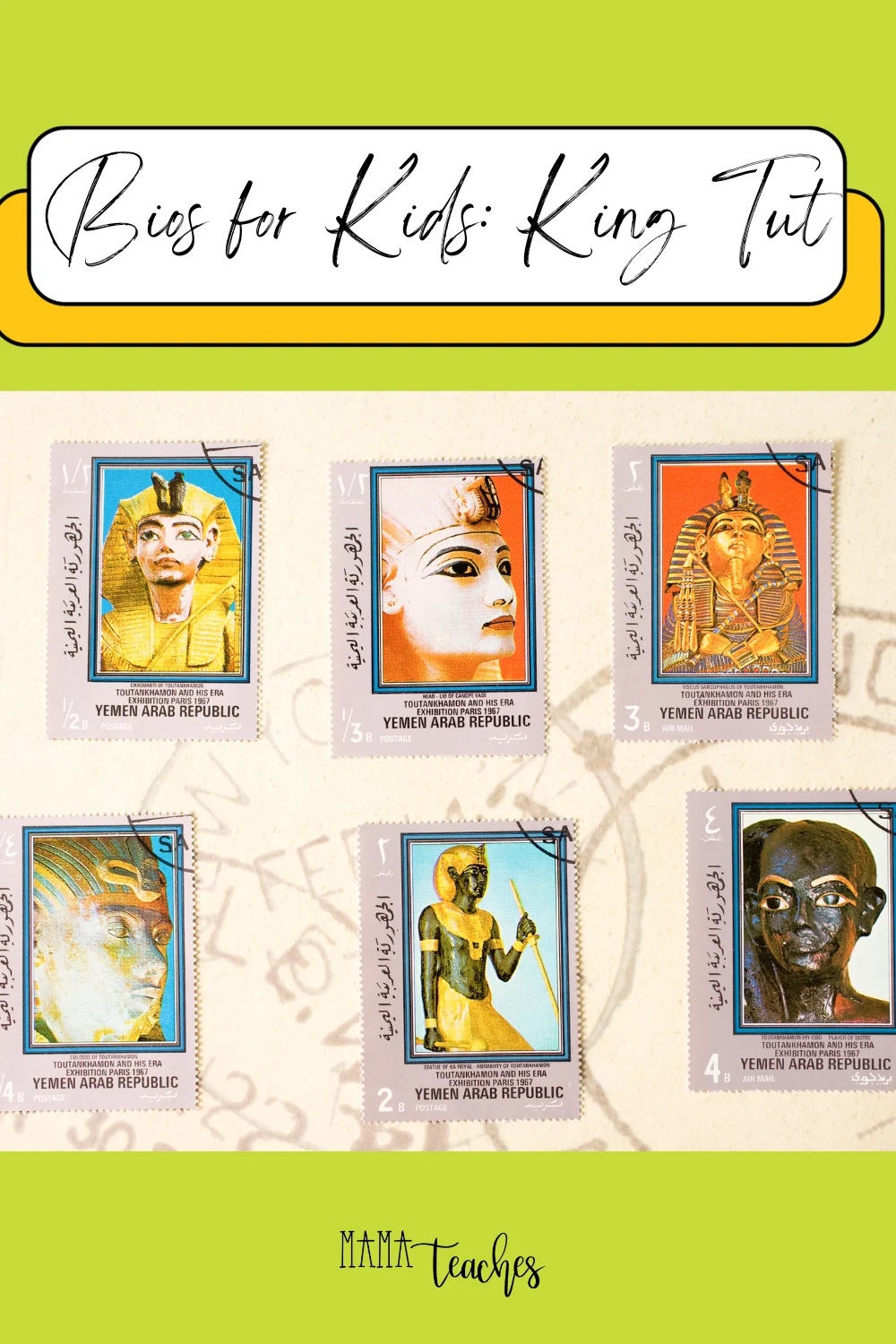
King Tut’s Mummy and Tomb
When King Tut died, the mummification process began.
Priests washed his body and removed his organs like his heart, brain, and lungs.
They preserved his body with salt and wrapped the body in special bandages. This process kept the body from decomposing.
On his face, they placed a 24-pound gold mask.
Then they placed him in a a series of coffins.
He was laid inside not one, not two, but three gold coffins.
Then, those coffins were placed inside a granite coffin.
The granite coffin was placed inside a series of giant wooden boxes covered in gold.
The tomb was also filled with over 5,000 items.
Egyptians believed a person needed supplies for the afterlife, so they packed the tomb with everything the young king might need.
The tomb contained food, clothes, weapons, games, furniture, statues, jewelry, and even his walking sticks!
The entrance to the tomb was buried, and King Tut’s mummy was undisturbed for over 3000 years.
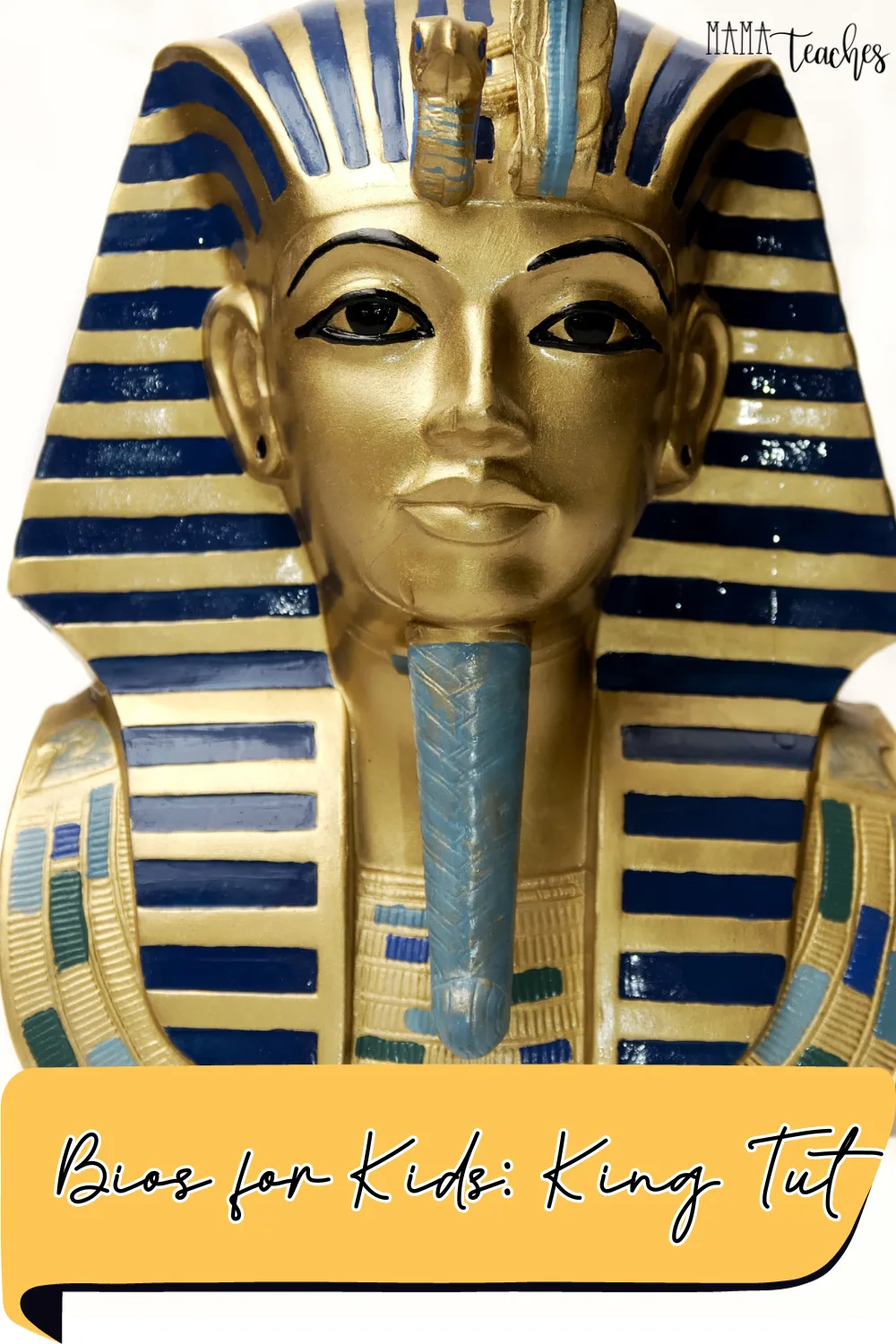
The Discovery of King Tut’s Tomb
Everyone knew that the Egyptian pharaohs were buried with treasure, so many tombs were robbed over the years.
Not so with the tomb of King Tut.
His tomb was undiscovered.
Howard Carter, a British Egyptologist (someone who studied Egypt), had been excavating in Egypt for thirty years.
In 1922, he dug in the Valley of the Kings, the burial ground for many pharaohs.
Most Egyptologists believed the Valley of Kings hid no more undiscovered tombs.
But Carter believed King Tut was there. He convinced the wealthy Earl of Carnarvon to pay for his dig.
He found a spot that was covered with debris from an ancient flood. It did not look special, but Howard Carter felt it was the spot where King Tut was buried.
Carter’s men moved mountains of stones from the spot. It was backbreaking work that took months.
On November 4, 1992, Carter arrived at the worksite. The crew was hushed and paused in their work.
They had uncovered a stair—just one.
With Carter there, they proceeded to dig out the entire stairwell.
They found the door still sealed. It was the tomb of King Tut.
Carter had to wait for the Earl of Carnarvon to arrive (he owed it to the man for funding the excavation).
On November 22, they opened the door. The opening was wide enough for only one man.
Carter shone the candle around the room.
The candlelight illuminated beautiful murals and heaps of artifacts. Some had a golden gleam.
“Can you see anything?” demanded an impatient Carnarvon.
“Yes, it is wonderful,” Carter breathed.
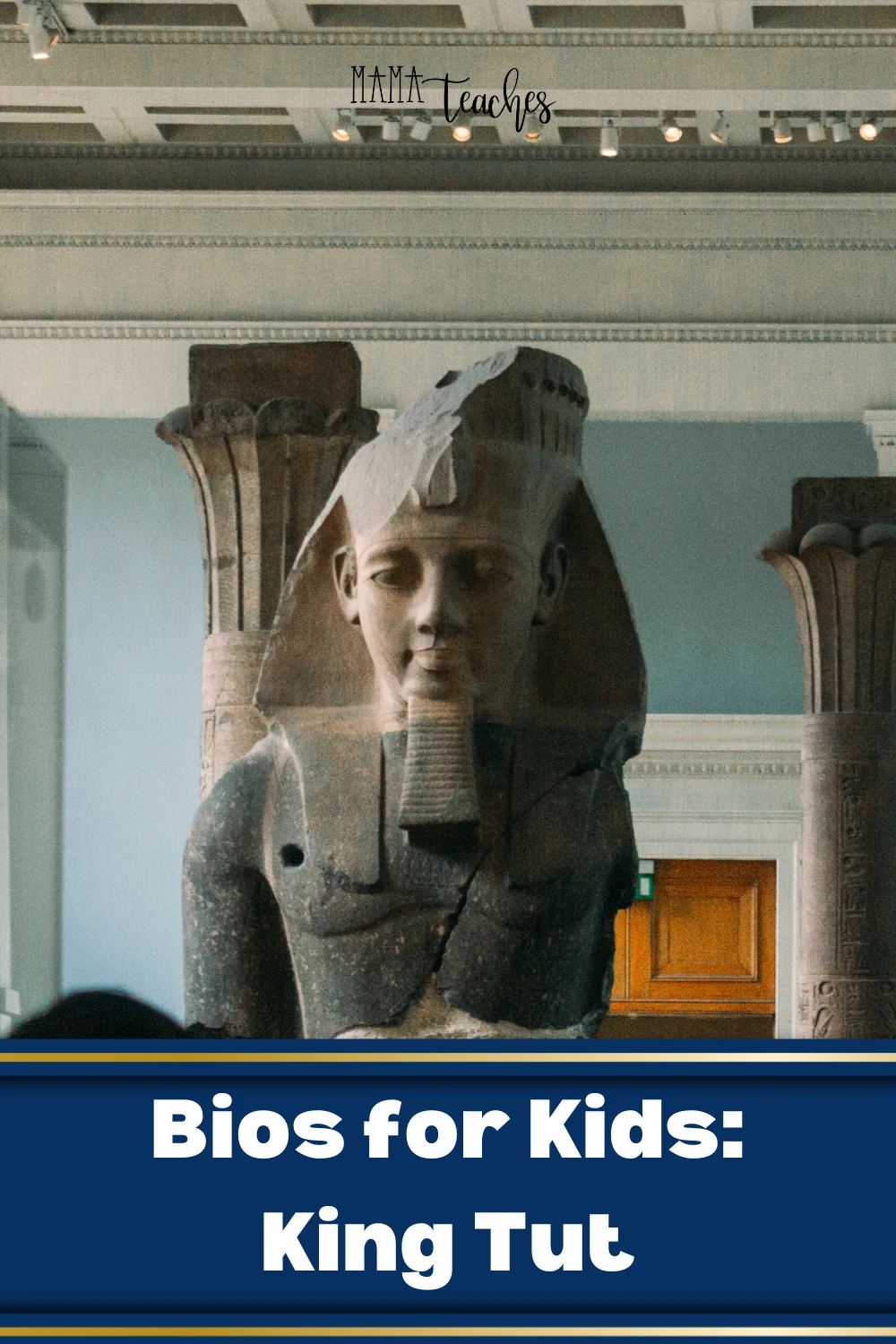
King Tut’s Treasure
The discovery of King Tut’s tomb was international news.
The newspapers covered the story. Tourists flocked to Egypt.
Carter worked in the tomb for eight years, taking pictures and cataloging every item.
Although the artifacts have toured museums worldwide, today the most fragile artifacts (including Tut’s gold burial mask) stay in Egypt.
People come from around the world to glimpse the mummy and treasure of King Tutankhamun.
King Tut is so famous he even has his own day; King Tut Day is November 4.
You May Also Like:
- Bios for Kids: Garrett Morgan
- Bios for Kids: All About Martin Luther King Jr.
- Bios for Kids: Sarah E. Goode
Bibliography
History.com Editors. “Tutankhamun.” History.Com, 9 Nov. 2009, www.history.com/topics/ancient-egypt/tutankhamen. Accessed 18 Oct. 2023.
“King Tutankhamun: Life, Death, & Family.” PBS.Org, 9 Aug. 2023, www.pbs.org/articles/king-tutankhamun-life-death-family. Accessed 18 Oct. 2023.
Marchant, Jo. “How Howard Carter Discovered King Tut’s Golden Tomb.” Smithsonian, 3 Nov. 2022, www.smithsonianmag.com/history/how-howard-carter-discovered-king-tuts-golden-tomb-180981052/. Accessed 18 Oct. 2023.
